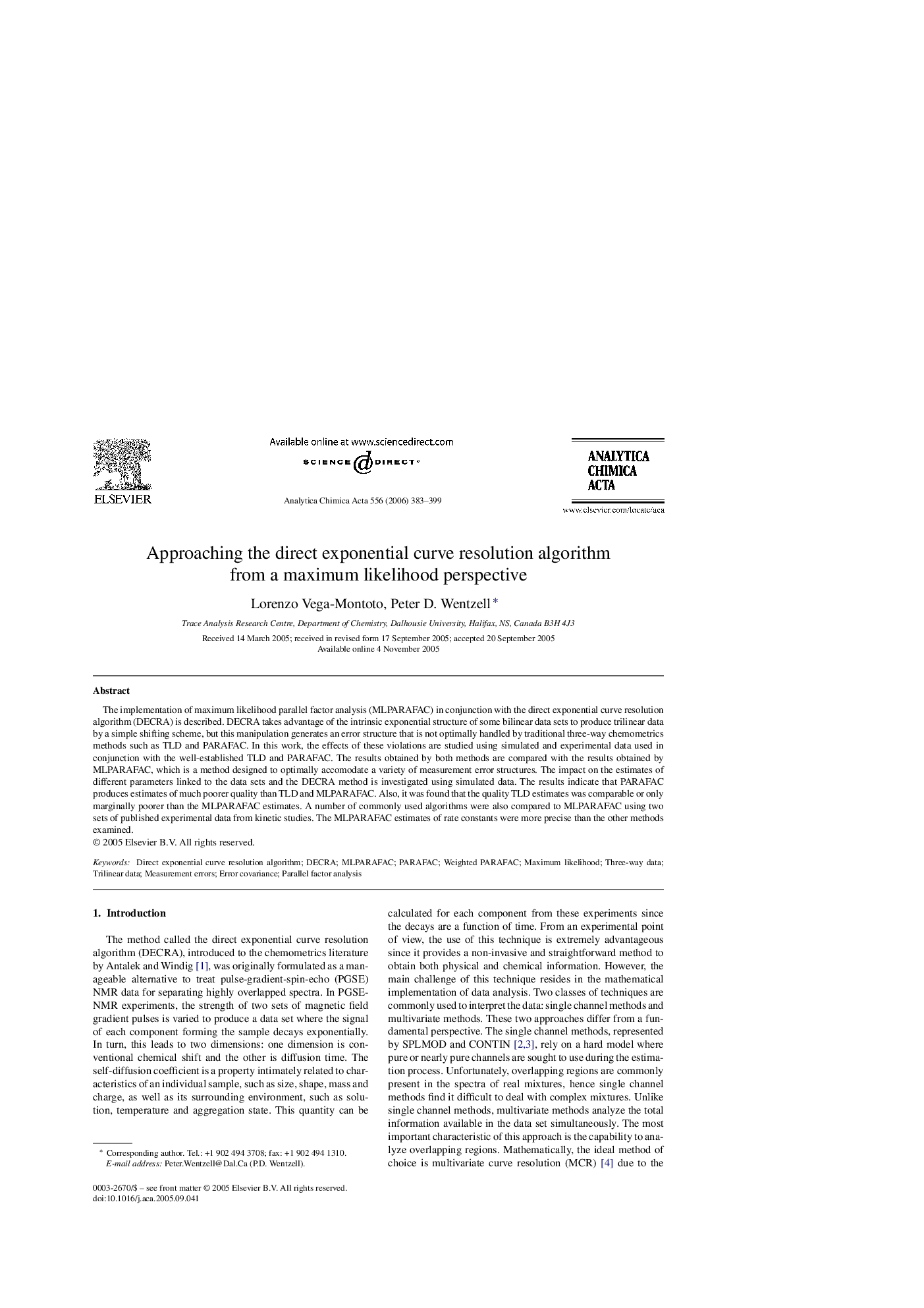| Article ID | Journal | Published Year | Pages | File Type |
|---|---|---|---|---|
| 1171815 | Analytica Chimica Acta | 2006 | 17 Pages |
Abstract
The implementation of maximum likelihood parallel factor analysis (MLPARAFAC) in conjunction with the direct exponential curve resolution algorithm (DECRA) is described. DECRA takes advantage of the intrinsic exponential structure of some bilinear data sets to produce trilinear data by a simple shifting scheme, but this manipulation generates an error structure that is not optimally handled by traditional three-way chemometrics methods such as TLD and PARAFAC. In this work, the effects of these violations are studied using simulated and experimental data used in conjunction with the well-established TLD and PARAFAC. The results obtained by both methods are compared with the results obtained by MLPARAFAC, which is a method designed to optimally accomodate a variety of measurement error structures. The impact on the estimates of different parameters linked to the data sets and the DECRA method is investigated using simulated data. The results indicate that PARAFAC produces estimates of much poorer quality than TLD and MLPARAFAC. Also, it was found that the quality TLD estimates was comparable or only marginally poorer than the MLPARAFAC estimates. A number of commonly used algorithms were also compared to MLPARAFAC using two sets of published experimental data from kinetic studies. The MLPARAFAC estimates of rate constants were more precise than the other methods examined.
Keywords
Related Topics
Physical Sciences and Engineering
Chemistry
Analytical Chemistry
Authors
Lorenzo Vega-Montoto, Peter D. Wentzell,
